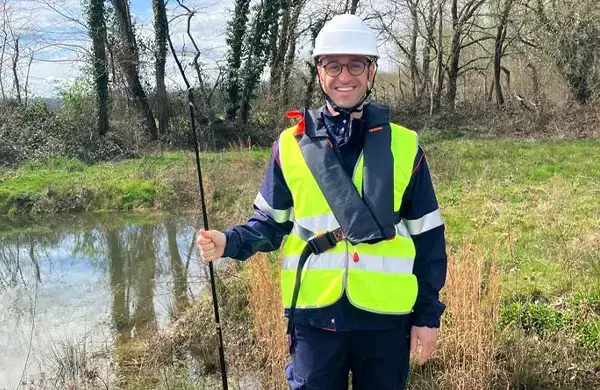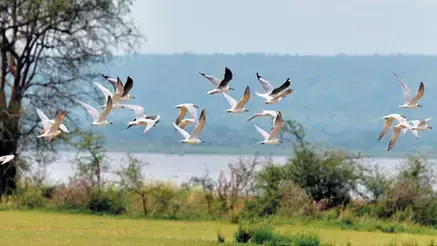Between Pau and Tarbes, in the municipality of Ger, the Manas site in the Pyrénées Atlantiques is a unique experimental playground for the TotalEnergies teams at the CSTJF in Pau. Now managed by the French Natural Areas of Conservancy in Nouvelle-Aquitaine (CEN NA), this former landfill site is now an open-air laboratory for testing innovative technologies to monitor fauna and habitats for wildlife.

Prairies and forests cover one area of the site and, in another, wetlands and rivers are home to high biodiversity. The site in the small valley of Manas, Ger, in southwest France, underwent a major transformation in 2019 to become a true sanctuary for biodiversity. “The upper part of the former landfill site has become a prairie, and the lower section is now forestland with rivers and wetlands,” explains Camille Le Guen, a TotalEnergies R&D biodiversity engineer at the CSTJF. The varied habitats form an ideal setting in which to study biodiversity. In partnership with the CEN Nouvelle-Aquitaine, the CSTJF is launching many initiatives to study biodiversity in line with the priorities for TotalEnergies. The Company is a major player in the energy transition and puts all aspects of sustainable development at the heart of its projects and operations. It has promised to contribute to the achievement of the UN Sustainable Development Goals (SDG) including those related to conserving biodiversity. The Company seeks in particular to limit its environmental impacts according to the Avoid-Reduce-Offset philosophy and relies on its Research & Development teams to innovate.
Camera traps, acoustic recorders, maps of habitats by drones and satellite images, and environmental DNA are just some of the technologies used to both inventory local species and evaluate the tools in different environments. “Manas has a wide variety of habitats and species,” affirms Camille Le Guen. "This setting enables us to test our technologies in different environments and identify the devices and systems most suitable to each context," she explains.

15,000 photos per year!
The monitoring campaigns at Manas generate an incredible quantity of data. The camera traps record more than 15,000 images every year! As for the acoustic recorders, they helped identify around forty species of birds and about twenty species of bats in 2024. The work done also confirmed the presence of otters in several areas of the site - precious information for the CEN NA, as they had been trying to validate the data for years!
Mapping habitats
In addition to inventorying species, the team studies the habitats map to improve ecosystem health assessments and their connectivity. "Knowing whether habitats are fragmented or well-connected is crucial to understanding the movements of different species and preserving their equilibrium," emphasizes Camille Le Guen.
In this sense, Manas is a full-scale laboratory, ideal for fine-tuning tools and perfecting methods to improve the preservation of biodiversity. It allows the CSTJF teams to easily assess the methods and tools developed in a variety of ecosystems (forests, wetlands, etc.). The tools must be able to monitor biodiversity faster, be automated on site and non-invasive. By combining several techniques, a better representation of the ecosystems in which TotalEnergies operates is obtained, thereby helping to improve our in-house biodiversity monitoring practices.
The collaborative work between the TotalEnergies teams in Pau and the CEN Nouvelle-Aquitaine is not just about this specific scientific partnership. As part of its regional presence and global solidarity program, the Company encourages its staff to participate in volunteering missions. Every year, this initiative enables staff at the CSTJF and the PERL to respond to the needs of CEN volunteers. For example, they are working in Pau to close wild trails and leading actions to maintain hiking paths in Arthez-de-Béarn, Ger and Lembeye.

Biodiversity at TotalEnergies: portrait of a researcher
Eoacoustics, environmental genomics, connectivity - From Pau, Thomas Merzi leads R&D biodiversity conservation projects.

Protecting Biodiversity Commitments and Actions
As a major player in the energy transition, TotalEnergies puts sustainable development in all its dimensions at the heart of its projects and operations to contribute to the well-being of people.

Join Action! the global solidarity program
Associations in Pau and the surrounding area, why not become partners of the employees solidarity commitment program?